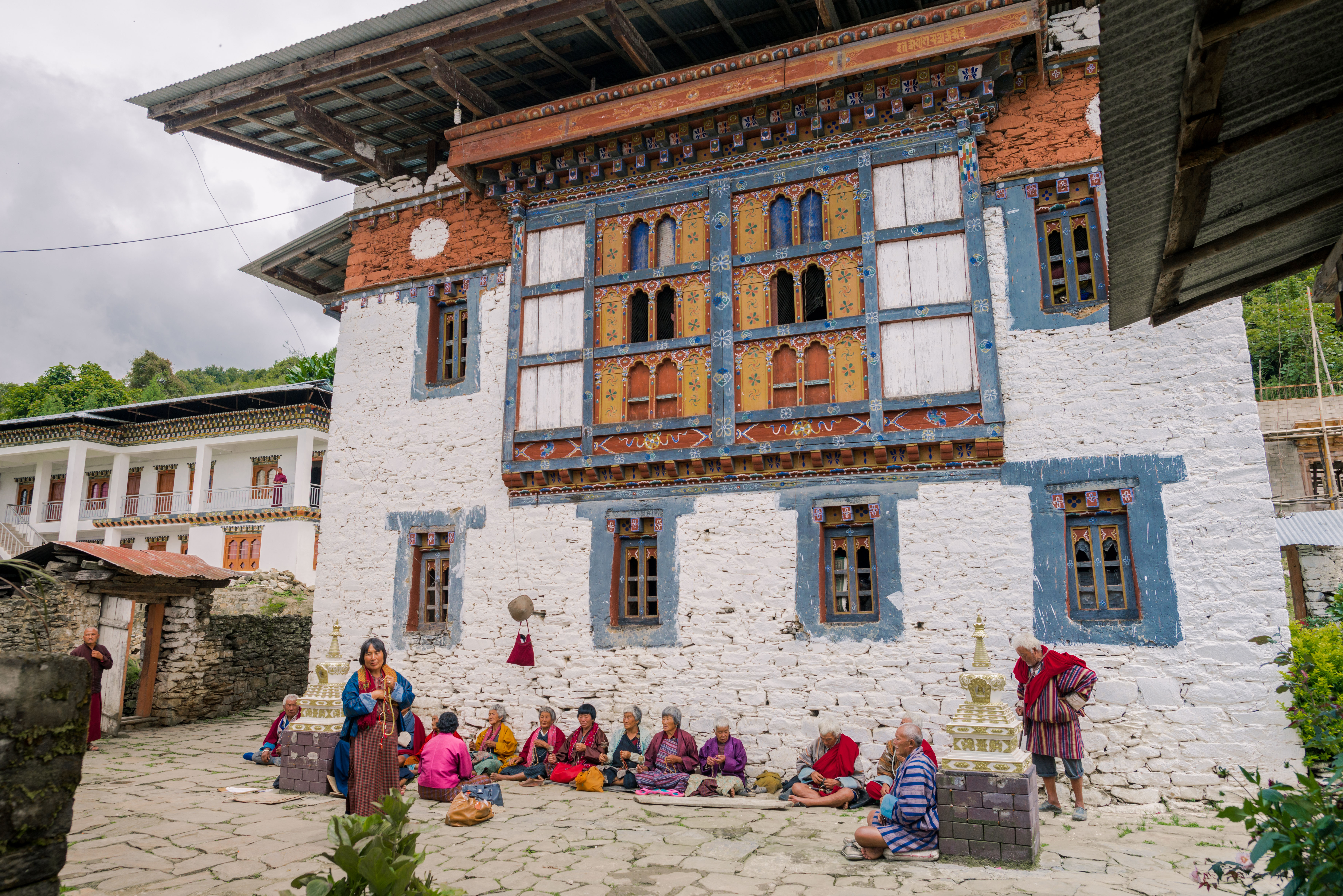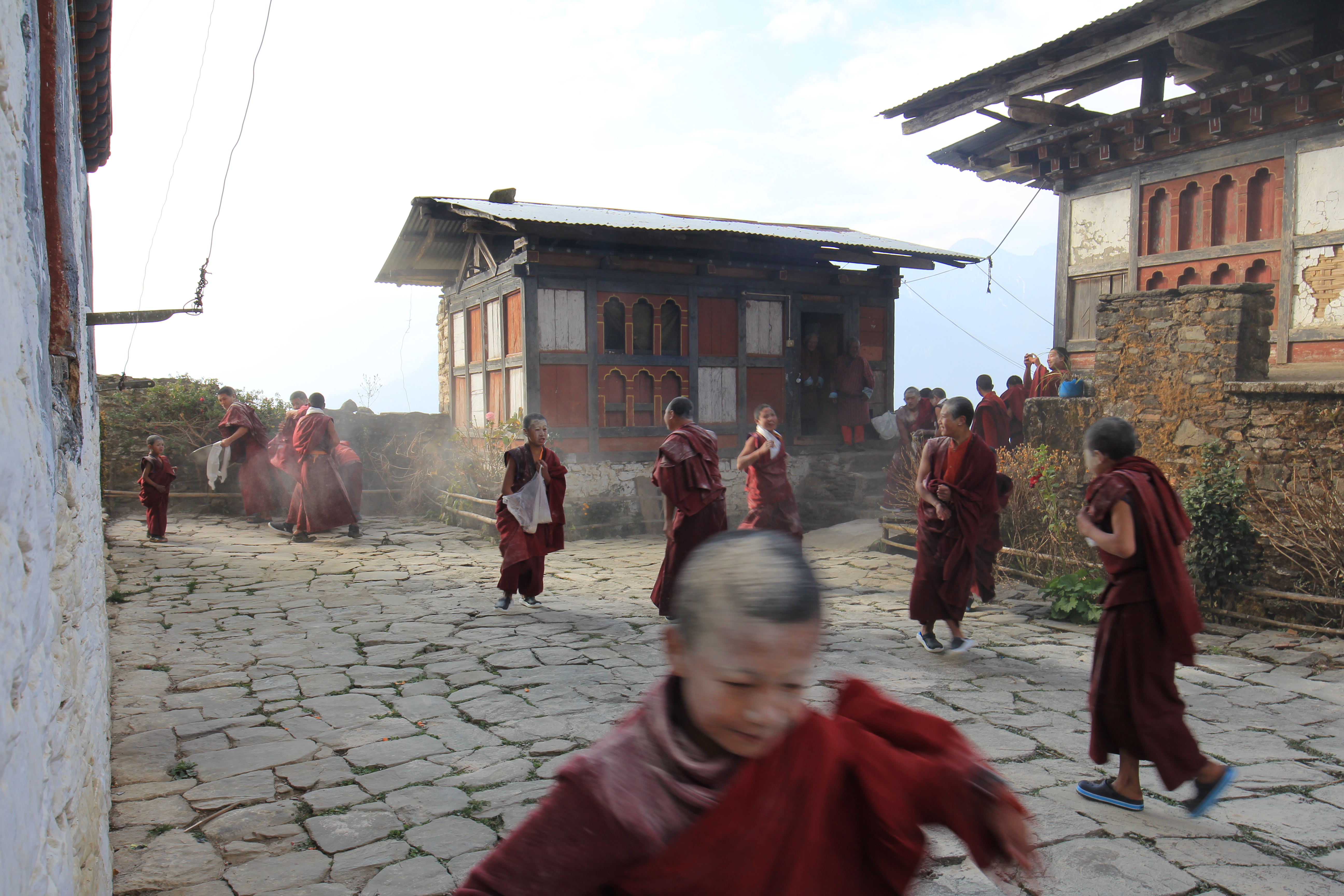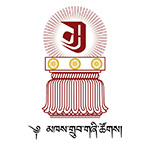Sangchen Ogyen Tsuklag Monastery: A Sacred Heritage
Background
Sangchen Ogyen Tsuklag Monastery, originally founded in the 8th century by Monmo Tashi Khyidren, the Bhutanese consort of Guru Padmasambhava, is a testament to Bhutan’s rich spiritual history. Consecrated by Guru Rinpoche himself, the monastery is nestled in the tranquil village of Samcholing, Trongsa, in Central Bhutan.
Monmo Tashi Khyidren, a revered figure in Bhutanese history, is associated with many sacred sites, including Paro Taktsang (Tiger’s Nest), where she accompanied Guru Dorji Drolo. Among these, she chose Samcholing as her retreat site, where she established the main temple. Sacred relics near the monastery include holy water revealed by Guru Rinpoche and a footprint left by their horse. Over the centuries, the monastery has been a spiritual seat for significant Buddhist masters.
Notable treasures housed within the monastery include the “spoken Buddha" statue crafted by Trulku Chogden Gompo, a reincarnation of Terton Dorji Lingpa, and the treasure bell of Terton Sherab Mebar. These relics, along with its history, make the monastery a vital center of worship and heritage for Bhutanese communities.
Today, the monastery supports a vibrant community of 50 monks, 7 teachers, 3 yogis in lifelong retreat, and several elderly residents. It has become a center for studying and preserving the esteemed Longchen Nyingthik lineage, a Dzogchen tradition tracing back to Guru Padmasambhava. The monastery also serves the local community by offering prayers and rituals for life events, including births, marriages, and deaths.
In 2009, the monastery was offered to the 5th Khedrup Rinpoche, fulfilling a prophecy by the 10th Lhalung Thuksey Thekchog, Tenpai Gyeltsen. Rinpoche has since revitalized the monastery with a vision to restore it and establish an International Buddhist Academy that welcomes individuals from all backgrounds to study, practice, and foster compassion and humanity.
Restoration Efforts
After centuries of enduring Bhutan’s harsh climate, the monastery had seen no major renovations for over 200 years. The main temple, built with traditional Bhutanese materials like stone, mud, and wood, faces severe structural challenges, including collapsing walls, termite-damaged wood, and a fragile roof.
In 2023, the restoration of the main Buddha statue, other sacred relics, and the rebuilding of the fencing wall commenced with donor support. In 2024, Phase 1 of the restoration project began, focusing on the structural renovation of the two-story main temple using local materials and the reconstruction of the courtyard surrounding the monastery.
Future Plans
The second phase of the project will prioritize the conservation of the monastery’s intricate wall paintings and frescos, which are unique and sacred art forms. Collaboration with art conservation experts will ensure these invaluable cultural treasures are preserved.
The restoration of Sangchen Ogyen Tsuklag Monastery represents not just the preservation of Bhutan’s spiritual heritage but also a commitment to maintaining its cultural and historical legacy for generations to come.


